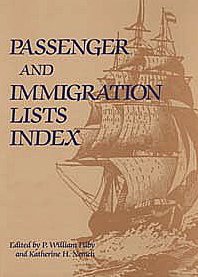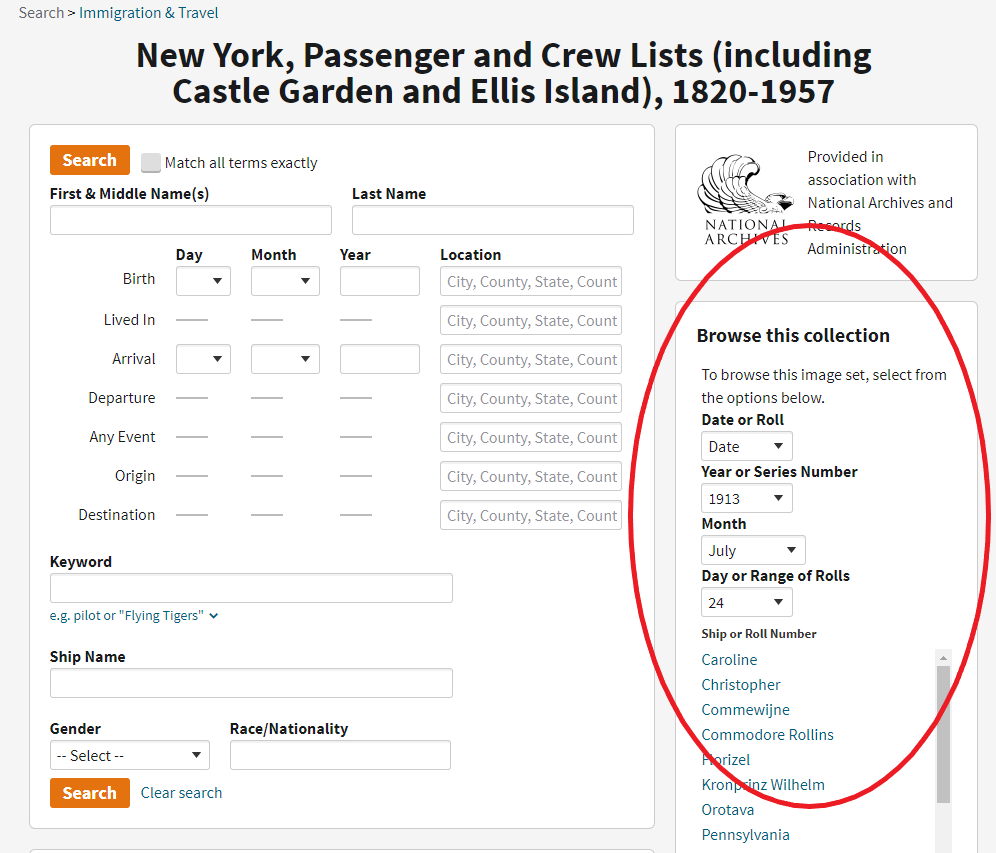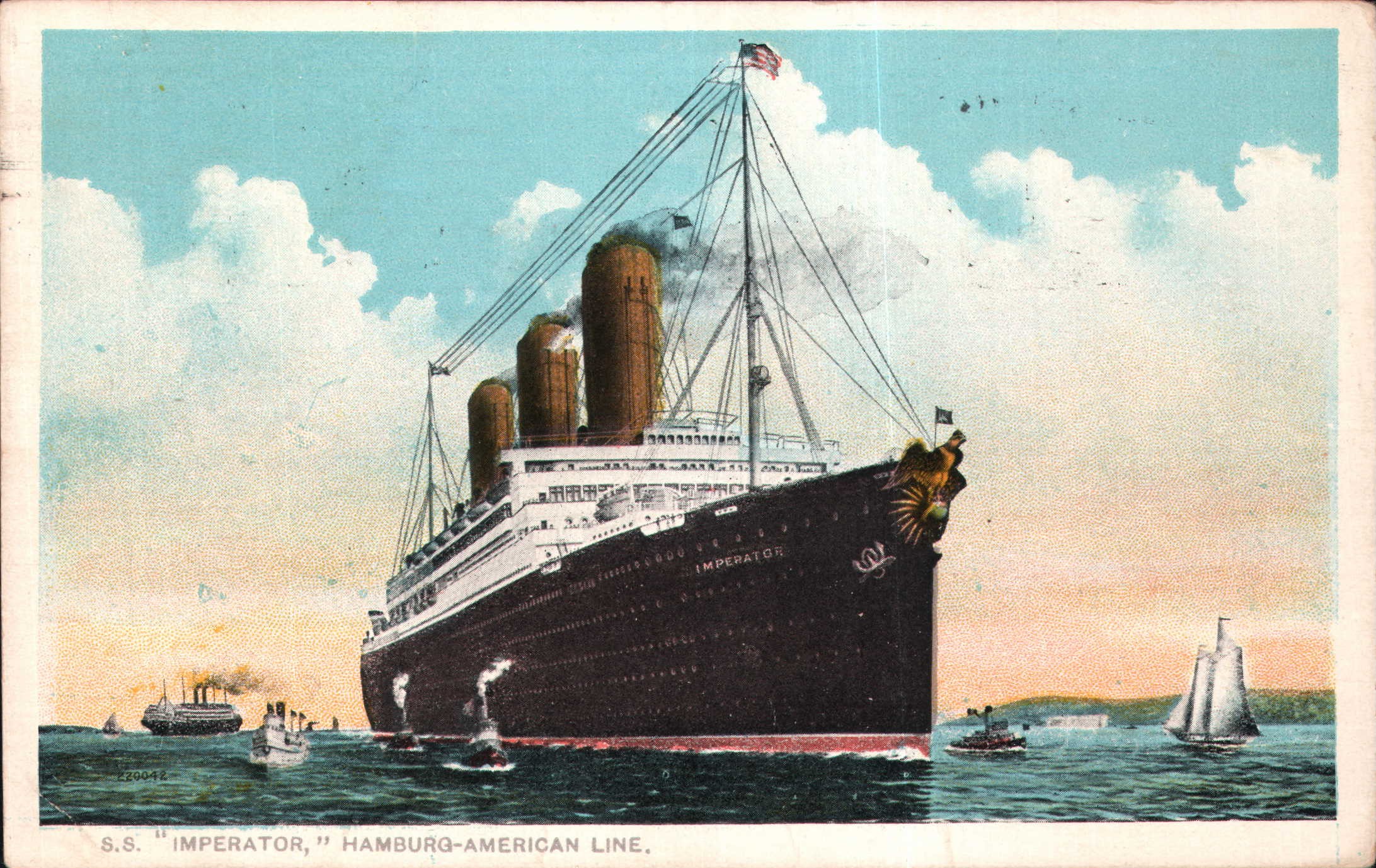
This is the second in a three-part series, “Tracing Your Immigrant Ancestors.” Last week I talked about naturalization records. Next week I will discuss finding your immigrant ancestor’s village of origin. Today, I am addressing passenger lists.
Ship passenger lists are immigration documents that were created at the point of departure and submitted by the shipmaster to customs officials at the destination port. They included the names of every passenger on the ship, as well as the name of the ship, point and date of departure, and point and date of arrival. Other information that was generally recorded for each passenger includes:
- Age
- Gender
- Occupation
- Country of Origin
- Country or Place of Destination
Additional information can be found on immigration passenger lists after 1883:
- Exact birthplace or last residence
- Marital Status
- Previous U.S. residence
- Place of Destination
- Names of relatives in the “old country” and the United States
Timeline
Before 1820, passenger lists were not required to be kept, but passenger information can be found in other places. These include published lists of immigrants’ names taken from newspapers, naturalization oaths, indenture lists, headright grants, and other records.

William P. Filby’s Passenger and Immigration Lists Index was created by indexing thousands of different records. A digital, searchable database has been created from this index and is available at Ancestry as the collection, “U.S. and Canada, Passenger and Immigration Lists Index, 1500s-1900s.” Each entry has been indexed by name and is searchable by keyword. The original sources that are listed in Filby’s index may be available at the Family History Library (do a catalog search) or at local public or university libraries.
Customs Passenger Lists were kept from 1820 to 1902. These are lists that were submitted by the masters of ships to U.S. customs officials upon arrival in the United States.
Immigration Passenger Lists commenced in 1883. These lists, also known as “ship manifests,” were submitted by the masters of ships to the Immigration and Naturalization Service and its predecessors.

Major Ports of Arrival
The port of Boston was the leading port from 1630-1750, with other ports in Philadelphia, New Orleans, and Baltimore being founded in the late 1600’s – early 1700’s. New York became the leading port in 1825, the date the Erie Canal opened. From 1855-1890, passengers arriving in New York came through Castle Garden. Beginning in 1892, immigrants came through Ellis Island. The Statue of Liberty – Ellis Island Foundation hosts an online searchable database of 22.5 million arrivals to New York between 1892 – 1924.

Before Beginning Your Search…
A handout on Emigration and Immigration found on the FamilySearch Wiki recommends acquiring the following background information before beginning your search. This information can all help in identifying your ancestor in passenger lists:
- Full name
- Approximate date of arrival in the United States
- Approximate age on arrival to the United States
- The likely port of arrival
- The name of their spouse
- Their religion
- Their occupation
Learning as much as you can about your immigrant ancestor from other sources will help you be able to:
- Identify him in relevant passenger records.
- Distinguish him from others of the same name.
- Concentrate your efforts in the right time period and location.
The handout also provided this note about names: It is important to understand that many immigrant names were misspelled, misunderstood because of heavy accents or the lack of the ability to speak English, or Americanized. John Black in the United States may have been Johannes Schwartz in the homeland. A name may have been lengthened or shortened. For example, Wise may have once been Weisen and before that Weisenberg and earlier still Weisenberger. This makes searching a passenger list index for your ancestor a real challenge.
Discovering Your Immigrant Ancestors on Passenger Lists
Begin your search at one of the major Genealogical Websites, under immigration and travel records. This general search will allow you to check for your ancestor in multiple databases for many ports all at once.
- FamilySearch Historical Records: Under “Restrict records by”, click on “Type.” Check the “Immigration and Naturalization” box.
- Ancestry.com Immigration and Travel Collections.
- FindMyPast Immigration and Travel Collections.
- MyHeritage Immigration and TravelCollections.
If your search at these sites is not successful, search additional lists by type. A list of collections pertaining to each type can be found on the page “United States Online Genealogy Records” at FamilySearch and include:
- Additional collections not included in the Partner Site Indexes.
- Border Crossings between Canada and the United States – it was sometimes cheaper to travel to Canada than the U.S.
- Records grouped by nationality, religious, or political group.
- State collections – begin with the state where your ancestor first lived.
Other helpful resources for finding immigration records can be found on the following sites:
- The National Archives Access to Archival Databases (AAD) – Searchable databases for Russian, Irish, German, and Italian immigration covering the years 1834-1900.
- One-Step Webpages by Stephen P. Morse – One-step tools for finding immigration records
- Cyndi’s List – Links to sites with general lists of links for ship, passenger & crew lists.
- Genealogy Bank article – “Where to Find Passenger Lists to Trace Your Immigrant Ancestors” – a list of print and digital resources.
Steps to Take When Your Ancestor is Not Found
If you are unable to locate your immigrant ancestor on a passenger list by searching the records outlined above, you may find the name of their ship and date of arrival listed on Naturalization Records. Remember that naturalization was not required. I shared tips for determining whether an ancestor became a naturalized citizen and how to find naturalization records in part 1 of this series.
Once you discover the name of the ship your ancestor traveled on and date of arrival, you can browse that ship’s passenger lists by visiting Ancestry’s passenger list databases and choosing to browse by arrival date and ship. For example, to find immigrant ancestors that came through New York, go to the New York, Passenger and Crew Lists (including Castle Garden and Ellis Island), 1820-1957 database. Browse by date of arrival and ship name as shown below:

Once you have located your ancestor on a passenger list, add to their story by finding a photo of the ship and learning more about the voyage. You can do this by visiting Ancestry’s “Passenger Ships and Images” page. Browse by first letter of the ship name, then by ship name and year range. For each ship listed, there is a description of it, containing information such as line sailed under, builder, ship type, tonnage, dimensions, number of masts and funnels, ship history, and years in service. You can also perform a Google search for additional accounts of the voyage of that particular ship or the era your ancestor immigrated.

Take the Time to Find These Valuable Records
Successfully locating passenger lists for your immigrant ancestors is valuable not only for the direct evidence they contain but also because much can be gleaned from indirect evidence. Who did your ancestor travel with? Traveling companions may be relatives or at least neighbors. How much money was your ancestor carrying and who paid for his or her passage? This could tell you about his or her economic status. Was your ancestor single or married? What clues about their life does their marital status provide?
Although it may require some time and effort to find your immigrant ancestor on a passenger list, the information you can potentially gain from the records will make it a worthwhile endeavor. Good luck with your search!
